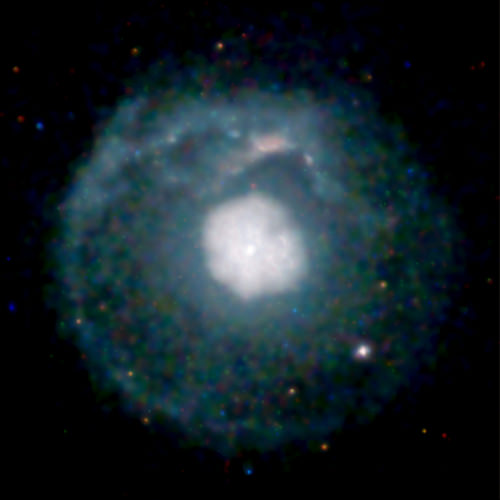A few nice good images I found:
A supernova remnant about 20,000 light years from Earth

Image by Smithsonian Institution
Description: This image, made by combining 150 hours of archived Chandra data, shows the remnant of a supernova explosion. The central bright cloud of high-energy electrons is surrounded by a distinctive shell of hot gas. The shell is due to a shock wave generated as the material ejected by the supernova plows into interstellar matter. Although many supernovas leave behind bright shells, others do not. This supernova remnant was long considered to be one without a shell until it was revealed by Chandra.
Creator/Photographer: Chandra X-ray Observatory
NASA’s Chandra X-ray Observatory, which was launched and deployed by Space Shuttle Columbia on July 23, 1999, is the most sophisticated X-ray observatory built to date. The mirrors on Chandra are the largest, most precisely shaped and aligned, and smoothest mirrors ever constructed. Chandra is helping scientists better understand the hot, turbulent regions of space and answer fundamental questions about origin, evolution, and destiny of the Universe. The images Chandra makes are twenty-five times sharper than the best previous X-ray telescope. NASA’s Marshall Space Flight Center in Huntsville, Ala., manages the Chandra program for NASA’s Science Mission Directorate in Washington. The Smithsonian Astrophysical Observatory controls Chandra science and flight operations from the Chandra X-ray Center in Cambridge, Massachusetts.
Medium: Chandra telescope x-ray
Date: 2005
Persistent URL: https://photography.si.edu/SearchImage.aspx?id=5347
Repository: Smithsonian Astrophysical Observatory
Gift line: NASA/CXC/U.Manitoba/H.Matheson
Accession number: g21_xray
A spiral galaxy about 25 million light years from Earth.

Image by Smithsonian Institution
Description: Chandra’s observations of NGC 4631 reveal a giant halo of hot gas (shown in blue and purple) surrounding this spiral galaxy. The structure across the middle of the image and the extended faint filaments (shown in orange) represent data from the Hubble Space Telescope that reveal giant bursting bubbles created by merging clusters of massive stars. NGC 4631 closely resembles our Milky Way galaxy, and observations of NGC 4631 and similar galaxies provide astronomers with an important tool in the understanding our own galactic environment.
Creator/Photographer: Chandra X-ray Observatory
NASA’s Chandra X-ray Observatory, which was launched and deployed by Space Shuttle Columbia on July 23, 1999, is the most sophisticated X-ray observatory built to date. The mirrors on Chandra are the largest, most precisely shaped and aligned, and smoothest mirrors ever constructed. Chandra is helping scientists better understand the hot, turbulent regions of space and answer fundamental questions about origin, evolution, and destiny of the Universe. The images Chandra makes are twenty-five times sharper than the best previous X-ray telescope. NASA’s Marshall Space Flight Center in Huntsville, Ala., manages the Chandra program for NASA’s Science Mission Directorate in Washington. The Smithsonian Astrophysical Observatory controls Chandra science and flight operations from the Chandra X-ray Center in Cambridge, Massachusetts.
Medium: Chandra telescope x-ray
Date: 2001
Persistent URL: https://photography.si.edu/SearchImage.aspx?id=5360
Repository: Smithsonian Astrophysical Observatory
Gift line: X-ray: NASA/CXC/UMass/D.Wang et al.
Accession number: ngc4631